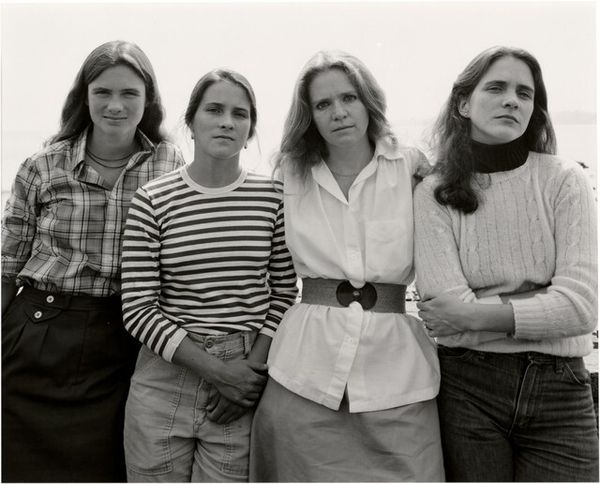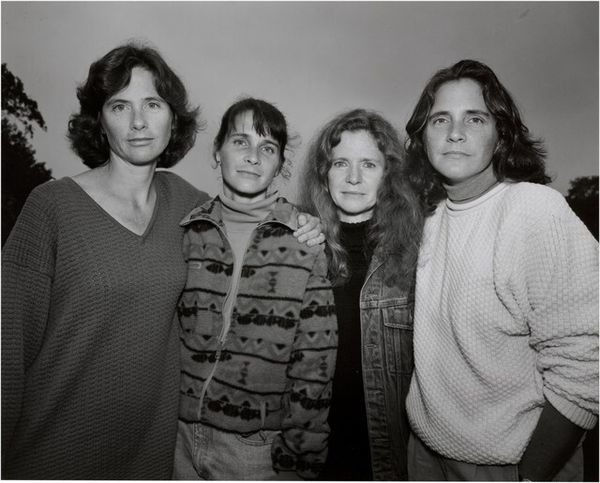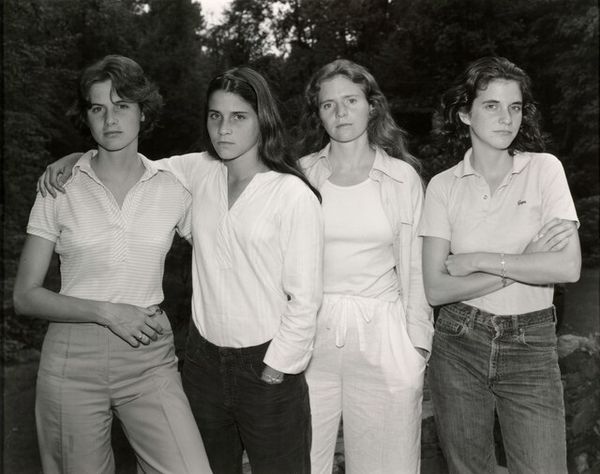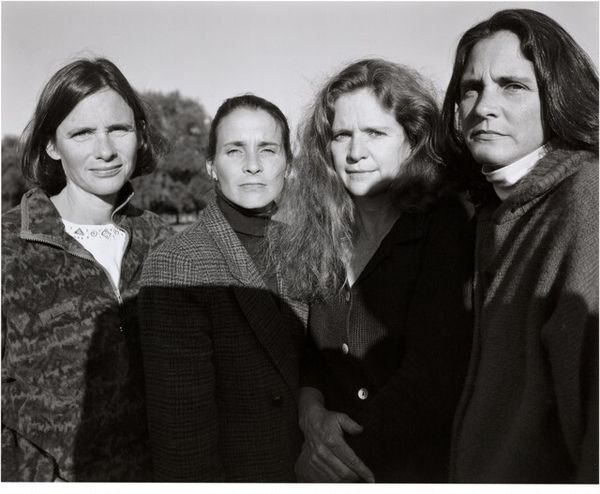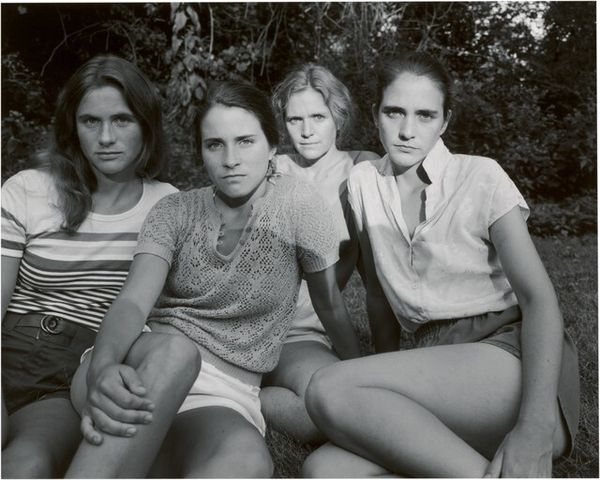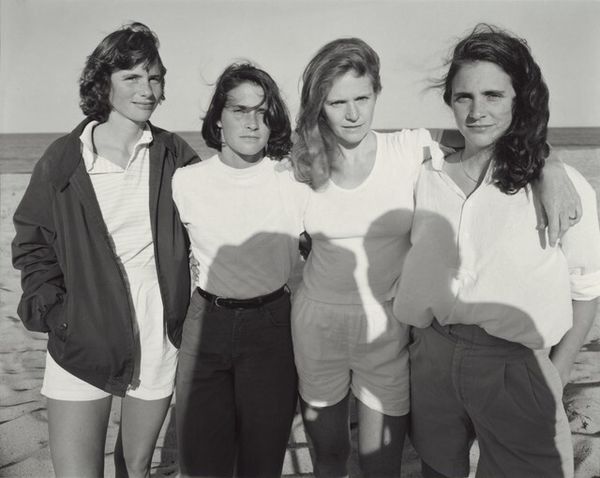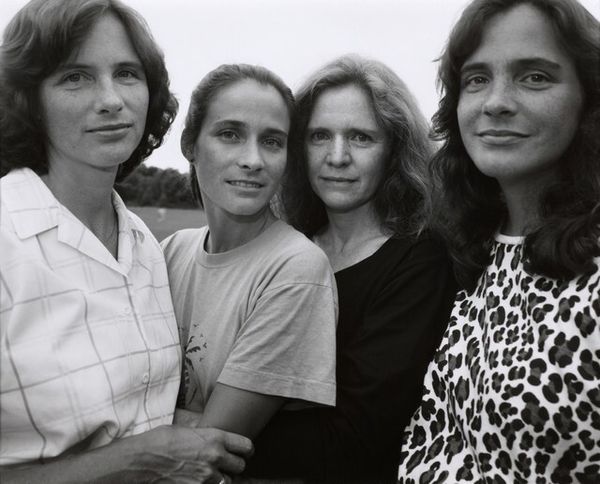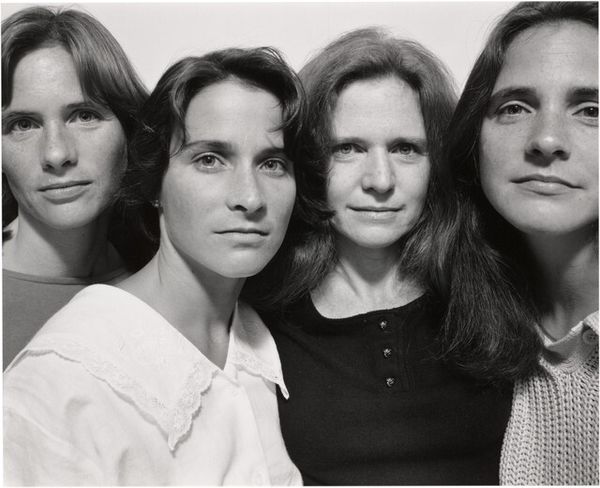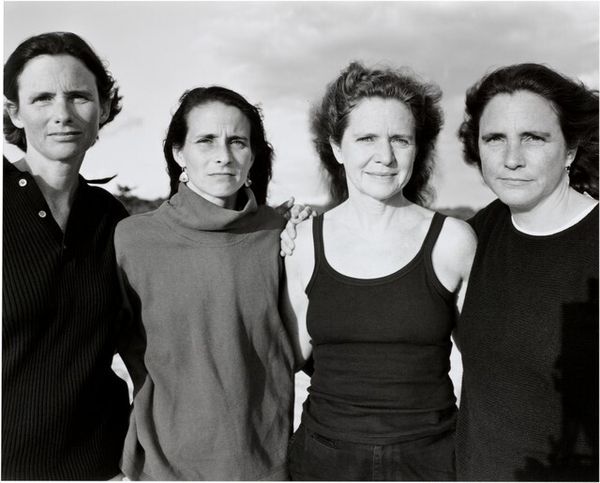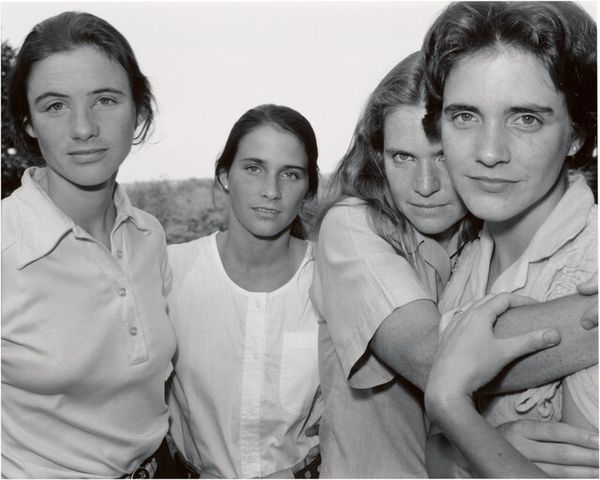
photography
#
portrait
#
contemporary
#
street-photography
#
photography
#
clothing photography
Dimensions: sheet: 20.2 x 25.2 cm (7 15/16 x 9 15/16 in.)
Copyright: National Gallery of Art: CC0 1.0
Curator: This photograph, taken by Nicholas Nixon in 1977, is entitled "The Brown Sisters, Cambridge, Massachusetts." What are your first thoughts? Editor: There's something so arresting about the composition. The linear arrangement of the sisters, the stark lighting, it feels very direct. Almost confrontational. Curator: The work presents an early image from an ongoing series, capturing the Brown sisters annually. It speaks to ideas of seriality, documenting aging, but also questions the commodification and consumption of such intimate records within the art world. Editor: Yes, but notice how the subdued tonality focuses us on form. The way their faces, their expressions, become the landscape. The contrast in their clothing is particularly compelling. That one sister's striped shirt becomes a very arresting focal point. Curator: Precisely. What I find interesting is considering how the artist’s process might have become intertwined with their own familial routines, turning intimate labor into art production. Each image contributes to constructing not only personal histories but also reflections on familial dynamics and cultural expectations. Editor: I see that, yet I keep circling back to the symmetry Nixon has established, playing against subtle differences to achieve a specific formal tension. Look at the way their poses vary so slightly yet contribute so much. It’s as if he’s arranged elements to provoke this contemplative response. Curator: True. Considering Nixon's work through the lens of family albums reveals how such projects question broader social narratives embedded in images of women. It calls into scrutiny notions of authorship. Editor: Interesting viewpoint! For me, that the composition consistently directs us towards a meditation on the subtle interplay between consistency and change through shape, tone and line is its lasting appeal. It transforms the viewer. Curator: Agreed, and observing how time becomes a tangible component—an evolving dialogue—recontextualizes discussions about photographic realism. Editor: Precisely, both interpretations expand and deepen its resonance for future viewings.
Comments
No comments
Be the first to comment and join the conversation on the ultimate creative platform.
